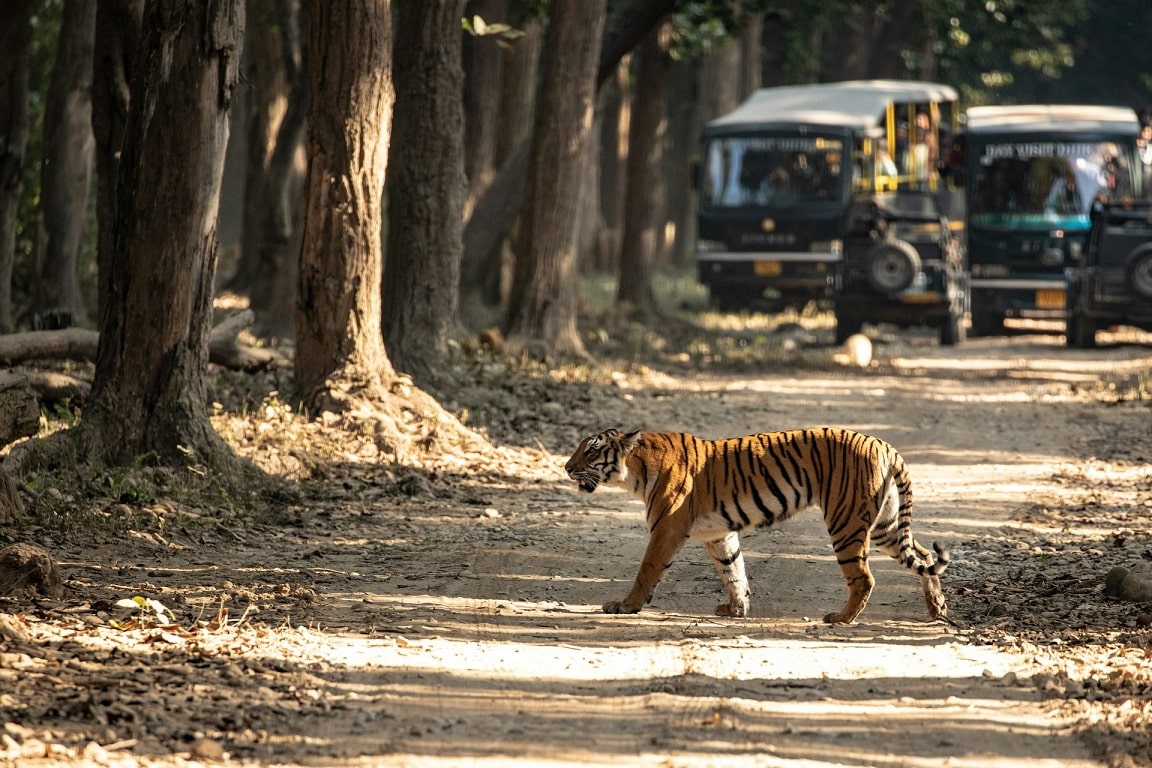India’s national parks and wildlife sanctuaries form a tapestry of biodiversity and natural wonders, offering a sanctuary for a myriad of species amidst diverse landscapes. From the majestic tigers prowling the forests of Ranthambore and Bandhavgarh to the graceful Asiatic lions of Gir National Park, these protected areas are vital for the conservation of India’s iconic wildlife. Sundarbans National Park’s mangrove forests provide a haven for Bengal tigers and rare saltwater crocodiles, while the high-altitude terrain of Hemis National Park shelters elusive snow leopards. Whether exploring the lush forests of Bandipur or the rugged terrain of Tadoba Andhari Tiger Reserve, visitors are immersed in a world where nature thrives and conservation efforts ensure the survival of some of the planet’s most remarkable creatures. These sanctuaries not only preserve India’s natural heritage but also offer unforgettable experiences for those who seek to connect with the wild soul of the subcontinent. Explore the list of Bird Sanctuary in India.
List of National Park and Sanctuary in India
- Jim Corbett National Park: Located in the state of Uttarakhand, Jim Corbett National Park is India’s oldest national park and is renowned for its population of Bengal tigers. It also shelters various other species of mammals, including elephants, leopards, and deer. The park’s picturesque landscapes, including dense forests, grasslands, and riverine habitats, make it a popular destination for wildlife safaris and birdwatching.
- Ranthambore National Park: Situated in the state of Rajasthan, Ranthambore National Park is famous for its population of Bengal tigers, which can often be spotted roaming amidst the ancient ruins of Ranthambore Fort. The park’s dry deciduous forests and rocky terrain provide habitat for a variety of wildlife, including leopards, sloth bears, and a diverse range of bird species.
- Kaziranga National Park: Located in the northeastern state of Assam, Kaziranga National Park is a UNESCO World Heritage Site known for its significant population of Indian one-horned rhinoceroses. The park’s tall grasslands, marshes, and forests also support populations of tigers, elephants, wild water buffalo, and a myriad of bird species, including the rare Bengal florican.
- Bandhavgarh National Park: Situated in the central Indian state of Madhya Pradesh, Bandhavgarh National Park is renowned for its high density of Bengal tigers. The park’s dense forests, grasslands, and rocky terrain provide ideal habitat for a variety of wildlife, including leopards, deer, and numerous bird species. Bandhavgarh is also known for its ancient caves and historic forts.
- Keoladeo National Park Bharatpur Rajasthan: Keoladeo National Park, located in Bharatpur, Rajasthan, is a UNESCO World Heritage Site renowned for its avian diversity. Originally a hunting ground for the maharajas of Bharatpur, the park was declared a protected area in 1971. It is a haven for birdwatchers, particularly during the winter months when thousands of migratory birds, including Siberian cranes, come to roost in its wetlands. The park’s diverse habitats, including marshes, grasslands, and woodlands, support over 370 species of birds, as well as numerous mammals and reptiles. Visitors can explore the park on foot, bicycle, or rickshaw, enjoying close encounters with colorful birds and experiencing the tranquility of nature in this vibrant ecosystem.
- Periyar Wildlife Sanctuary: Located in the southern state of Kerala, Periyar Wildlife Sanctuary is centered around the picturesque Periyar Lake and is known for its population of Asian elephants. Visitors can explore the sanctuary through boat safaris, nature walks, and bamboo rafting excursions, offering opportunities to spot a variety of wildlife, including tigers, leopards, and endemic bird species.
- Sundarbans National Park: Located in the Sundarbans delta in West Bengal, Sundarbans National Park is a UNESCO World Heritage Site known for its unique mangrove forests and diverse ecosystem. It is home to the Royal Bengal Tiger, as well as other wildlife such as saltwater crocodiles, spotted deer, and various bird species.
- Bandipur National Park: Situated in the southern state of Karnataka, Bandipur National Park is part of the Nilgiri Biosphere Reserve and is known for its population of endangered species, including tigers and Indian elephants. The park’s varied terrain, including forests, grasslands, and rivers, provides habitat for a wide range of flora and fauna.
- Gir National Park: Situated in the western state of Gujarat, Gir National Park is the last remaining refuge of the Asiatic lion. It is home to a thriving population of these majestic big cats, as well as other wildlife such as leopards, deer, and various bird species. Gir offers visitors a unique opportunity to observe lions in their natural habitat.
- Tadoba Andhari Tiger Reserve: Located in the state of Maharashtra, Tadoba Andhari Tiger Reserve is one of India’s premier tiger reserves. It is known for its high density of Bengal tigers, as well as other wildlife such as leopards, sloth bears, and Indian bison. Visitors can enjoy safari drives through the reserve to spot these magnificent creatures in their natural habitat.
- Hemis National Park: Located in the Ladakh region of Jammu and Kashmir, Hemis National Park is the largest national park in India and is known for its population of snow leopards. The park’s rugged mountains, deep valleys, and high-altitude terrain provide habitat for a variety of wildlife, including ibex, blue sheep, and Himalayan birds.
These are just a few examples of the many national parks and wildlife sanctuaries that India has to offer, each showcasing the country’s rich biodiversity and providing invaluable opportunities for wildlife conservation and eco-tourism.










